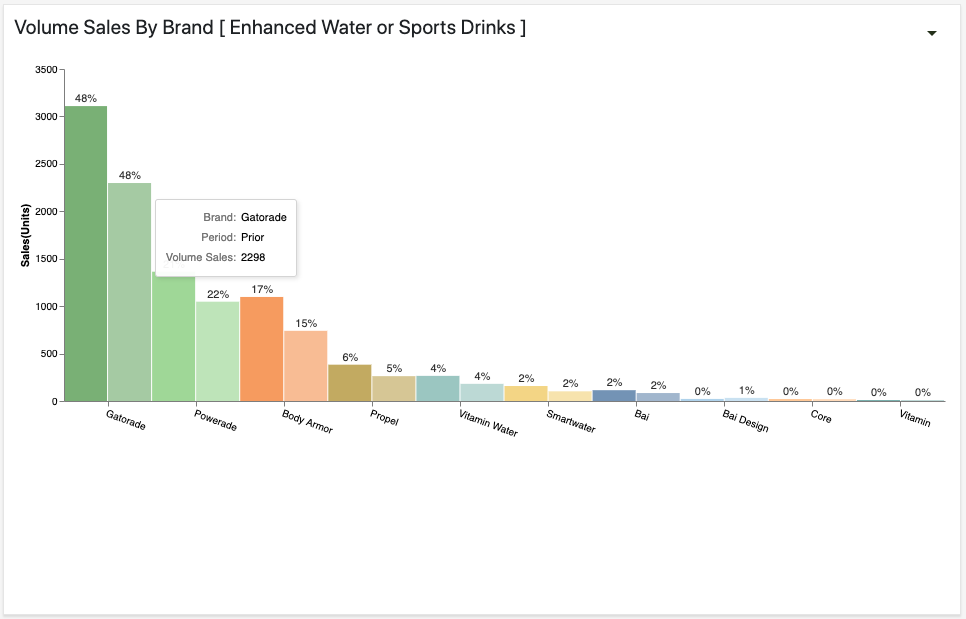The Importance of Data Analytics for Convenience Store Chains
Since the contract renewal season is getting underway, this volume discusses Data Analytics Strategy and some of the new tools that Taiga has made available to independent convenience store operators.
Prior to Covid-19, most independent convenience store operators paid only modest attention to the ever-present changes in their customer mix and buying habits. This lack of attention was not for lack of interest – operators know that the big chains achieve better margins because of their analysis – but the product costs, labor required, and logistics of gathering the information made a data analytics strategy too expensive for even mid-sized convenience stores chains to generate a positive ROI.
Independent operators who attempted to implement an analytics system experienced issues like:
- System implementation process that took months and even then didn’t work.
- IT problems beyond the capabilities of their staff – making them dependent on expensive contractors.
- Labor-intensive data collection processes that required manual exports.
- Product incompatibilities that forced them to replace existing systems like accounting and POS.
- Huge amounts of training required, like learning SQL, to use the system reasonably well.
So it is perfectly understandable that most independent convenience store operators perform lightweight data analytics, relying on industry benchmarks and supplier planograms.
The Changing Environment Post-Covid
Covid-19 escalated the rate of change by a factor of ten, catching most convenience store operators with no easy way to identify and analyze new trends. For example, many operators haven’t realized that a completely new category of buyer, the “Grocery Buyer”, now accounts for up to 25% of store traffic, with an average basket size over $20 – twice the industry average (Have you been wondering why craft beer and premium wine sales skyrocketed in certain stores?). The accelerated rate of change caused many independent operators to wish once again for a practical and affordable way to access convenience store data.
Fortunately, technology continues to advance. Here at Taiga, we recently released our Front Office Platform that solves the data collection headaches with a new device that we call the “Data Dock”. The Data Dock is about the size of a deck of cards and it can be shipped to any store and plugged in by a non-technical staff member. It then begins to automatically upload real-time data from every system at the store to our secure cloud. Advanced AI is constantly analyzing, categorizing, and pinpointing key indicators in your data. The results are then formatted into user-friendly consoles for your staff.
The Front Office Platform Console is easy to understand and it provides real-time, store by store planograms of your entire catalog of products. Suddenly convenience store operators have an affordable way to perform real data analytics. What follows are three examples of how our Front Office Platform can improve your bottom line.
|
The season for renewal of vendor contracts for 2021 will be one of great opportunity and risk. Suppliers will be eager to unload slow moving products on uninformed buyers. The convenience store operators with visibility into their customer traffic and product sell-through rates will surely have a competitive advantage. Category Management Tools can be used to answer questions like:
- Which adjustments should I make to space allocation and facings?
- Can I compare the categories and brands that are growing and declining in my own stores to what supplier planograms are urging me to buy?
- How much do the needs of my two rural stores differ from the industry averages used in my supplier’s planogram? How about my inner-city stores?
- How should I change the product mix for my store now that the new high-rise office building opened nextdoor?
- Is this shipper contract a great deal or will it clutter my stores with inventory I will never move?
- Should I sacrifice valuable shelf space to carry this entire set of products or are there really only a couple of SKUs that matter in my stores?

Your shelves and coolers are valuable real estate and your suppliers are competing for every inch. Shelf space allocation and facing analysis are key Category Management tools that large chains use when reviewing their contracts. Until recently, it has been too expensive and labor intensive for independent convenience stores to perform this analysis. Fortunately, Taiga’s Front Office Platform now offers a reliable affordable product for such analysis – using real-time data from your individual stores.
|
The trouble with Loyalty programs for independent convenience store operators is prooving their effectiveness is challenging. Most loyalty programs are put in place because the operator uses industry experience to make a judgement call or relies on what other operators have done. But proof is elusive: how do you know if a given loyalty program attracts new customers or causes existing customers to come back or buy more? Getting it right requires being able to test and measure the effectiveness of this programming:
- Are my programs increasing my customer traffic?
- Are they motivating the customers I intended to target?
- Am I seeing the desired results in basket size and the product movement?
- Are the results sufficient to cover the costs of the program?
Proof cannot be developed from industry average data or even daily averages. It must come from real-time correlation of loyalty program activity and actual sales at a specific store. Here is an example:

A new Front Office Platform user was running a pump-for-a-cause promotion to support the local high school athletic programs on one dispenser at a store. It had been running all summer and he had no way to measure if it was making a difference. After installing Taiga’s Front Office Platform, he took one look at this pump traffic report and realized that not only was the promotion working but it was also lifting sales at the two adjacent pumps.
Promotions and Loyalty Programs can be measured in many ways. The key is to have easy access to real-time data that tracks the results of the programs. The next step in the above example might be to track how many visits to the pump running the promotion led to in-store purchases. What products were purchased and how big was the basket?
|
One of the most important skills of a successful convenience store operator is price optimization. Many factors must be balanced:
- Will a higher price reduce volume so much that the gross margin goes down, not up?
- What will the long term effect of a higher price have on customer loyalty?
- Will a loss-leader price increase volume enough to offset the loss in gross margin?
- Do different stores require different prices due to differences in customer mix?
- Is the overhead of varying prices so high it is not worth the trouble in a certain case?
The variables are unending, yet price setting can make or break a given store. For example, the operator of one convenience store located in an upscale neighborhood decided to offer premium wine at such a discount that the pricing was below local big box stores. Wealthy customers soon made frequent visits. Basket analysis showed that they casually bought other high quality products (with substantial mark-ups) each visit. The result was a very effective pricing strategy that only worked for that particular store.
Optimizing Convenience Store Prices with Data Analytics
Some operators rely on supplier data to set prices, but that data is based on regional or even national averages. If you’re relying on your suppliers to set your prices then you’re probably leaving profit on the table. Pricing can be effectively optimized at the local store level. Grocery chains have, for years, used local data to optimize pricing for each store. Convenience stores could do the same. Though some supplier agreements and other factors limit pricing flexibility, there is plenty of headroom to increase profitability.
The key to a well-structured pricing strategy is easy access to localized real-time data. Taiga’s Front Office Platform can deliver this data with little overhead even when you acquire a new store with a different mix of technology systems.
Conclusion
With our Front Office Platform, any convenience store can access data analytics tools, just like the larger chains. These tools can help you optimize your strategies and increase efficiency, margins and revenue. Our goal is to help smaller convenience stores with their data transformation. so contact us today to learn more.

 Vendor Contract Renewals
Vendor Contract Renewals Loyalty Programs
Loyalty Programs Pricing Optimization
Pricing Optimization